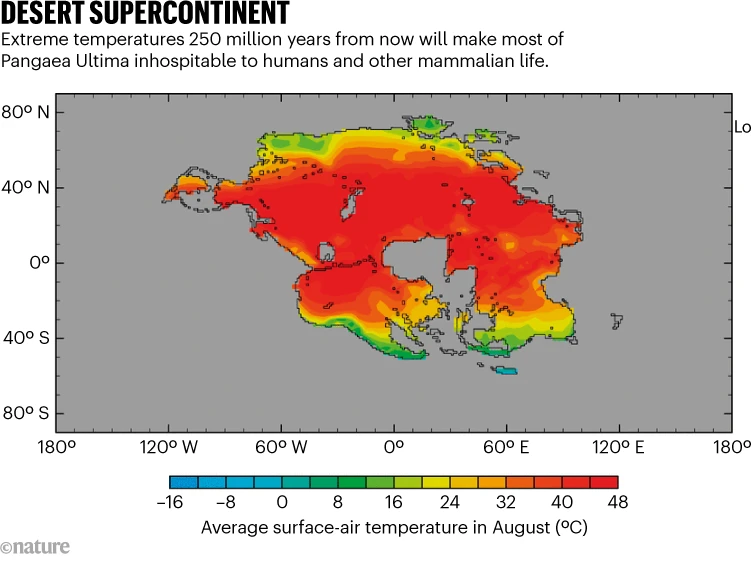Researchers predict that in 250 million years, up to 92% of the Earth’s territory may become uninhabitable for mammals. This conclusion was reached by a team of European scientists who modeled the consequences of continental drift. The results of their research are published in a recent issue of the journal Nature Geoscience.
New supercontinent
As you know, the continents of the earth do not stand in one place. The study of the history of the movement of tectonic plates has shown that with a periodicity of 500-600 million years, blocks of the continental crust are assembled into a single supercontinent, which then again breaks up into separate fragments.

Now the Earth is going through another cycle of such decay. But this will not always last. In the future, the continents of the earth will begin to come together again. The results of computer modeling suggest that a new supercontinent called Pangaea Ultima will form at the equator in about 250 million years, when the Atlantic Ocean will shrink and the merged Afro-Eurasian continent will crash into North and South America.
Desert Planet
A team of scientists tried to simulate the climate of the future supercontinent and came to rather disappointing conclusions. In most of Pangaea Ultima, the temperature will exceed 40 °C, which will make it uninhabitable for most mammals. The authors of the study figuratively compare the conditions on the supercontinent with those on the planet “Dune” from the novel and film of the same name.

According to scientists, the merging of continents will be manifested by an increase in volcanic activity, which will emit a huge amount of carbon dioxide into the atmosphere, which will lead to serious heating of the planet. Regions in the center of the supercontinent, far from the sea, will turn into deserts in which only very specialized mammals can live. The lack of moisture will also reduce the amount of silicon washed into the oceans, which normally removes CO2 from the atmosphere. It is also necessary to take into account the Sun. In 250 million years, its luminosity will increase by 2.5%, which will also contribute to climate change on Earth.
In the worst-case scenario, when carbon dioxide levels reach 1,120 parts per million, which is more than twice the current level, only 8% of the planet’s surface (coastal and polar regions) will still be habitable for most mammals. Now this figure is about 66%. Such processes will inevitably lead to mass extinction and the complete restructuring of the entire ecosystem of the planet.
But it should be noted that this is not the only model of the formation of Pangaea Ultima. Other scenarios suggest that it may form not in equatorial latitudes, but in the region of the north pole, which will lead to a colder climate.
It is also worth saying that geologists have evidence that Pangaea and other previous supercontinents had large inland deserts. In particular, similar processes were observed during the Triassic–Jurassic extinction event, which occurred about 200 million years ago. So the formation of Pangaea Ultima is not an automatic sentence for life on our planet.
According to https://www.nature.com
Follow us on Twitter to get the most interesting space news in time
https://twitter.com/ust_magazine
